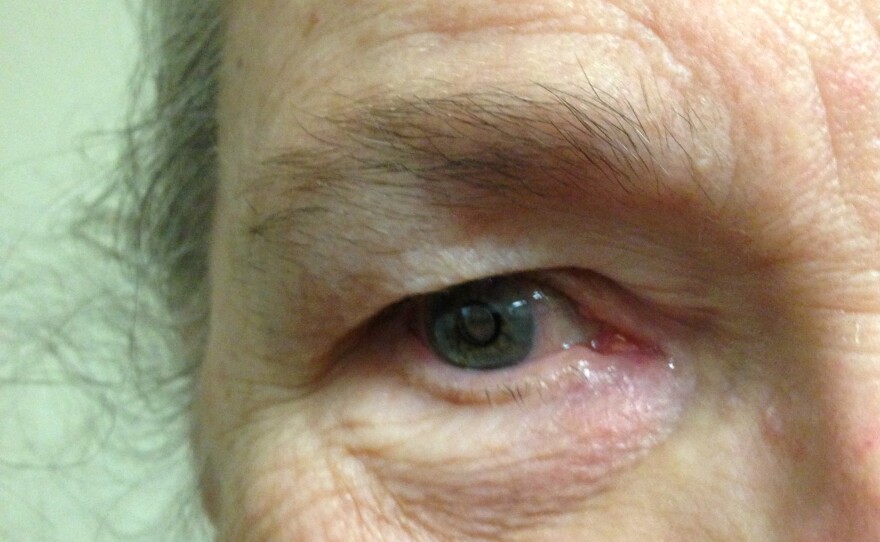The leading cause of blindness in adults in is age-related macular degeneration. More than a million Americans have it. And while there are some ways to keep the disease from getting worse, there’s no way to restore sight once it’s been lost. As part of KERA’s Breakthroughs project, Lauren Silverman reports on one North Texas woman who is among the first in the nation to have a new procedure that’s made it possible for her to see details she thought were lost forever.
For the first time in years, Helen Locklear saw, in detail, her granddaughter’s face.
“I literally saw the color of her eyes which is the most beautiful blue you’ve ever seen,” Locklear says.
Locklear’s granddaughter, Cheyenna, is 16, and up until a few months ago, Locklear could only make out the shape of her round face and long blond hair. Locklear is seventy-five and has age-related macular degeneration. Years ago she started losing her vision, and with it her ability to drive, read and see her family. Her doctors tried injecting medicine in her eye to stop the problem from getting worse, but it didn’t work.
There’s no cure for end-stage macular degeneration. But there is a new FDA-approved device, called the implantable miniature telescope. It can help patients like Locklear regain some of their lost sight by magnifying images and projecting them onto the healthy part of the retina not damaged by macular degeneration. A few months ago, Locklear became one of the first people in North Texas to try it.
According to Dr. Aaleya Koreishi, a cornea specialist in Arlington, the surgery is almost identical to a regular cataract surgery. Except “instead of the standard lens; we’re putting the implantable telescope in.”
At only 4 millimeters, the telescope is smaller than a pea, but it still requires a much larger incision than a standard lens. That means stitches, and Dr. Koreishi says, a longer recovery process.
Putting in the telescope is the easy part. After surgery, patients need training to help reteach the brain to use each eye differently. For example, Locklear can see the nurse enter the exam room with the peripheral vision in her good eye, but to see detail, say the nurse’s shirt or necklace, she has to use the eye with the telescope.
“Sometimes it can be a battle, but majority of time you learn to use one and bring the other one up to par. If you’re not patient, this is not for you,” Locklear says.
It could take Locklear a year or more to learn to use both eyes together effectively and see the full benefits of the implant. In a clinical trial of more than 200 patients, a majority (60%) percent of telescope-implanted eyes gained three lines or more of visual acuity after two years.
“I kind of feel like I went back to kindergarten again,” Locklear says. “But I can see [what] before I couldn’t. And it is has changed my life considerably.”







